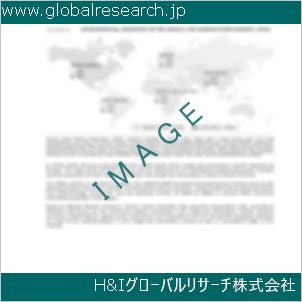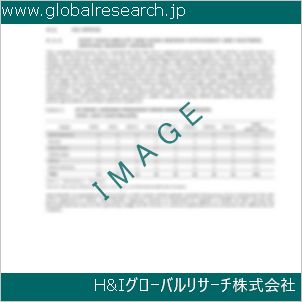1 Automotive Hydraulic Buffer Market Overview
1.1 Product Definition
1.2 Automotive Hydraulic Buffer Segment by Type
1.2.1 Global Automotive Hydraulic Buffer Market Value Growth Rate Analysis by Type 2022 VS 2029
1.2.2 Single-Tube
1.2.3 Double Tube
1.3 Automotive Hydraulic Buffer Segment by Application
1.3.1 Global Automotive Hydraulic Buffer Market Value Growth Rate Analysis by Application: 2022 VS 2029
1.3.2 Passenger Car
1.3.3 Commercial Vehicle
1.4 Global Market Growth Prospects
1.4.1 Global Automotive Hydraulic Buffer Production Value Estimates and Forecasts (2018-2029)
1.4.2 Global Automotive Hydraulic Buffer Production Capacity Estimates and Forecasts (2018-2029)
1.4.3 Global Automotive Hydraulic Buffer Production Estimates and Forecasts (2018-2029)
1.4.4 Global Automotive Hydraulic Buffer Market Average Price Estimates and Forecasts (2018-2029)
1.5 Assumptions and Limitations
2 Market Competition by Manufacturers
2.1 Global Automotive Hydraulic Buffer Production Market Share by Manufacturers (2018-2023)
2.2 Global Automotive Hydraulic Buffer Production Value Market Share by Manufacturers (2018-2023)
2.3 Global Key Players of Automotive Hydraulic Buffer, Industry Ranking, 2021 VS 2022 VS 2023
2.4 Global Automotive Hydraulic Buffer Market Share by Company Type (Tier 1, Tier 2 and Tier 3)
2.5 Global Automotive Hydraulic Buffer Average Price by Manufacturers (2018-2023)
2.6 Global Key Manufacturers of Automotive Hydraulic Buffer, Manufacturing Base Distribution and Headquarters
2.7 Global Key Manufacturers of Automotive Hydraulic Buffer, Product Offered and Application
2.8 Global Key Manufacturers of Automotive Hydraulic Buffer, Date of Enter into This Industry
2.9 Automotive Hydraulic Buffer Market Competitive Situation and Trends
2.9.1 Automotive Hydraulic Buffer Market Concentration Rate
2.9.2 Global 5 and 10 Largest Automotive Hydraulic Buffer Players Market Share by Revenue
2.10 Mergers & Acquisitions, Expansion
3 Automotive Hydraulic Buffer Production by Region
3.1 Global Automotive Hydraulic Buffer Production Value Estimates and Forecasts by Region: 2018 VS 2022 VS 2029
3.2 Global Automotive Hydraulic Buffer Production Value by Region (2018-2029)
3.2.1 Global Automotive Hydraulic Buffer Production Value Market Share by Region (2018-2023)
3.2.2 Global Forecasted Production Value of Automotive Hydraulic Buffer by Region (2024-2029)
3.3 Global Automotive Hydraulic Buffer Production Estimates and Forecasts by Region: 2018 VS 2022 VS 2029
3.4 Global Automotive Hydraulic Buffer Production by Region (2018-2029)
3.4.1 Global Automotive Hydraulic Buffer Production Market Share by Region (2018-2023)
3.4.2 Global Forecasted Production of Automotive Hydraulic Buffer by Region (2024-2029)
3.5 Global Automotive Hydraulic Buffer Market Price Analysis by Region (2018-2023)
3.6 Global Automotive Hydraulic Buffer Production and Value, Year-over-Year Growth
3.6.1 North America Automotive Hydraulic Buffer Production Value Estimates and Forecasts (2018-2029)
3.6.2 Europe Automotive Hydraulic Buffer Production Value Estimates and Forecasts (2018-2029)
3.6.3 China Automotive Hydraulic Buffer Production Value Estimates and Forecasts (2018-2029)
3.6.4 Japan Automotive Hydraulic Buffer Production Value Estimates and Forecasts (2018-2029)
3.6.5 South Korea Automotive Hydraulic Buffer Production Value Estimates and Forecasts (2018-2029)
3.6.6 India Automotive Hydraulic Buffer Production Value Estimates and Forecasts (2018-2029)
4 Automotive Hydraulic Buffer Consumption by Region
4.1 Global Automotive Hydraulic Buffer Consumption Estimates and Forecasts by Region: 2018 VS 2022 VS 2029
4.2 Global Automotive Hydraulic Buffer Consumption by Region (2018-2029)
4.2.1 Global Automotive Hydraulic Buffer Consumption by Region (2018-2023)
4.2.2 Global Automotive Hydraulic Buffer Forecasted Consumption by Region (2024-2029)
4.3 North America
4.3.1 North America Automotive Hydraulic Buffer Consumption Growth Rate by Country: 2018 VS 2022 VS 2029
4.3.2 North America Automotive Hydraulic Buffer Consumption by Country (2018-2029)
4.3.3 United States
4.3.4 Canada
4.4 Europe
4.4.1 Europe Automotive Hydraulic Buffer Consumption Growth Rate by Country: 2018 VS 2022 VS 2029
4.4.2 Europe Automotive Hydraulic Buffer Consumption by Country (2018-2029)
4.4.3 Germany
4.4.4 France
4.4.5 U.K.
4.4.6 Italy
4.4.7 Russia
4.5 Asia Pacific
4.5.1 Asia Pacific Automotive Hydraulic Buffer Consumption Growth Rate by Region: 2018 VS 2022 VS 2029
4.5.2 Asia Pacific Automotive Hydraulic Buffer Consumption by Region (2018-2029)
4.5.3 China
4.5.4 Japan
4.5.5 South Korea
4.5.6 China Taiwan
4.5.7 Southeast Asia
4.5.8 India
4.6 Latin America, Middle East & Africa
4.6.1 Latin America, Middle East & Africa Automotive Hydraulic Buffer Consumption Growth Rate by Country: 2018 VS 2022 VS 2029
4.6.2 Latin America, Middle East & Africa Automotive Hydraulic Buffer Consumption by Country (2018-2029)
4.6.3 Mexico
4.6.4 Brazil
4.6.5 Turkey
5 Segment by Type
5.1 Global Automotive Hydraulic Buffer Production by Type (2018-2029)
5.1.1 Global Automotive Hydraulic Buffer Production by Type (2018-2023)
5.1.2 Global Automotive Hydraulic Buffer Production by Type (2024-2029)
5.1.3 Global Automotive Hydraulic Buffer Production Market Share by Type (2018-2029)
5.2 Global Automotive Hydraulic Buffer Production Value by Type (2018-2029)
5.2.1 Global Automotive Hydraulic Buffer Production Value by Type (2018-2023)
5.2.2 Global Automotive Hydraulic Buffer Production Value by Type (2024-2029)
5.2.3 Global Automotive Hydraulic Buffer Production Value Market Share by Type (2018-2029)
5.3 Global Automotive Hydraulic Buffer Price by Type (2018-2029)
6 Segment by Application
6.1 Global Automotive Hydraulic Buffer Production by Application (2018-2029)
6.1.1 Global Automotive Hydraulic Buffer Production by Application (2018-2023)
6.1.2 Global Automotive Hydraulic Buffer Production by Application (2024-2029)
6.1.3 Global Automotive Hydraulic Buffer Production Market Share by Application (2018-2029)
6.2 Global Automotive Hydraulic Buffer Production Value by Application (2018-2029)
6.2.1 Global Automotive Hydraulic Buffer Production Value by Application (2018-2023)
6.2.2 Global Automotive Hydraulic Buffer Production Value by Application (2024-2029)
6.2.3 Global Automotive Hydraulic Buffer Production Value Market Share by Application (2018-2029)
6.3 Global Automotive Hydraulic Buffer Price by Application (2018-2029)
7 Key Companies Profiled
7.1 KYB Corporation
7.1.1 KYB Corporation Automotive Hydraulic Buffer Corporation Information
7.1.2 KYB Corporation Automotive Hydraulic Buffer Product Portfolio
7.1.3 KYB Corporation Automotive Hydraulic Buffer Production, Value, Price and Gross Margin (2018-2023)
7.1.4 KYB Corporation Main Business and Markets Served
7.1.5 KYB Corporation Recent Developments/Updates
7.2 KONI
7.2.1 KONI Automotive Hydraulic Buffer Corporation Information
7.2.2 KONI Automotive Hydraulic Buffer Product Portfolio
7.2.3 KONI Automotive Hydraulic Buffer Production, Value, Price and Gross Margin (2018-2023)
7.2.4 KONI Main Business and Markets Served
7.2.5 KONI Recent Developments/Updates
7.3 TOKICO LTD
7.3.1 TOKICO LTD Automotive Hydraulic Buffer Corporation Information
7.3.2 TOKICO LTD Automotive Hydraulic Buffer Product Portfolio
7.3.3 TOKICO LTD Automotive Hydraulic Buffer Production, Value, Price and Gross Margin (2018-2023)
7.3.4 TOKICO LTD Main Business and Markets Served
7.3.5 TOKICO LTD Recent Developments/Updates
7.4 Showa Corporation
7.4.1 Showa Corporation Automotive Hydraulic Buffer Corporation Information
7.4.2 Showa Corporation Automotive Hydraulic Buffer Product Portfolio
7.4.3 Showa Corporation Automotive Hydraulic Buffer Production, Value, Price and Gross Margin (2018-2023)
7.4.4 Showa Corporation Main Business and Markets Served
7.4.5 Showa Corporation Recent Developments/Updates
7.5 Mando Corporation
7.5.1 Mando Corporation Automotive Hydraulic Buffer Corporation Information
7.5.2 Mando Corporation Automotive Hydraulic Buffer Product Portfolio
7.5.3 Mando Corporation Automotive Hydraulic Buffer Production, Value, Price and Gross Margin (2018-2023)
7.5.4 Mando Corporation Main Business and Markets Served
7.5.5 Mando Corporation Recent Developments/Updates
7.6 ZF Group
7.6.1 ZF Group Automotive Hydraulic Buffer Corporation Information
7.6.2 ZF Group Automotive Hydraulic Buffer Product Portfolio
7.6.3 ZF Group Automotive Hydraulic Buffer Production, Value, Price and Gross Margin (2018-2023)
7.6.4 ZF Group Main Business and Markets Served
7.6.5 ZF Group Recent Developments/Updates
7.7 Tenneco
7.7.1 Tenneco Automotive Hydraulic Buffer Corporation Information
7.7.2 Tenneco Automotive Hydraulic Buffer Product Portfolio
7.7.3 Tenneco Automotive Hydraulic Buffer Production, Value, Price and Gross Margin (2018-2023)
7.7.4 Tenneco Main Business and Markets Served
7.7.5 Tenneco Recent Developments/Updates
7.8 CIJAN SHOCKS & STRUTS
7.8.1 CIJAN SHOCKS & STRUTS Automotive Hydraulic Buffer Corporation Information
7.8.2 CIJAN SHOCKS & STRUTS Automotive Hydraulic Buffer Product Portfolio
7.8.3 CIJAN SHOCKS & STRUTS Automotive Hydraulic Buffer Production, Value, Price and Gross Margin (2018-2023)
7.8.4 CIJAN SHOCKS & STRUTS Main Business and Markets Served
7.7.5 CIJAN SHOCKS & STRUTS Recent Developments/Updates
7.9 Add Industry (Zhejiang) Corporation Limted
7.9.1 Add Industry (Zhejiang) Corporation Limted Automotive Hydraulic Buffer Corporation Information
7.9.2 Add Industry (Zhejiang) Corporation Limted Automotive Hydraulic Buffer Product Portfolio
7.9.3 Add Industry (Zhejiang) Corporation Limted Automotive Hydraulic Buffer Production, Value, Price and Gross Margin (2018-2023)
7.9.4 Add Industry (Zhejiang) Corporation Limted Main Business and Markets Served
7.9.5 Add Industry (Zhejiang) Corporation Limted Recent Developments/Updates
7.10 BWI Group
7.10.1 BWI Group Automotive Hydraulic Buffer Corporation Information
7.10.2 BWI Group Automotive Hydraulic Buffer Product Portfolio
7.10.3 BWI Group Automotive Hydraulic Buffer Production, Value, Price and Gross Margin (2018-2023)
7.10.4 BWI Group Main Business and Markets Served
7.10.5 BWI Group Recent Developments/Updates
7.11 Sachs
7.11.1 Sachs Automotive Hydraulic Buffer Corporation Information
7.11.2 Sachs Automotive Hydraulic Buffer Product Portfolio
7.11.3 Sachs Automotive Hydraulic Buffer Production, Value, Price and Gross Margin (2018-2023)
7.11.4 Sachs Main Business and Markets Served
7.11.5 Sachs Recent Developments/Updates
7.12 Hitachi Astemo
7.12.1 Hitachi Astemo Automotive Hydraulic Buffer Corporation Information
7.12.2 Hitachi Astemo Automotive Hydraulic Buffer Product Portfolio
7.12.3 Hitachi Astemo Automotive Hydraulic Buffer Production, Value, Price and Gross Margin (2018-2023)
7.12.4 Hitachi Astemo Main Business and Markets Served
7.12.5 Hitachi Astemo Recent Developments/Updates
7.13 Magneti Marelli
7.13.1 Magneti Marelli Automotive Hydraulic Buffer Corporation Information
7.13.2 Magneti Marelli Automotive Hydraulic Buffer Product Portfolio
7.13.3 Magneti Marelli Automotive Hydraulic Buffer Production, Value, Price and Gross Margin (2018-2023)
7.13.4 Magneti Marelli Main Business and Markets Served
7.13.5 Magneti Marelli Recent Developments/Updates
7.14 EXEDY Corporation
7.14.1 EXEDY Corporation Automotive Hydraulic Buffer Corporation Information
7.14.2 EXEDY Corporation Automotive Hydraulic Buffer Product Portfolio
7.14.3 EXEDY Corporation Automotive Hydraulic Buffer Production, Value, Price and Gross Margin (2018-2023)
7.14.4 EXEDY Corporation Main Business and Markets Served
7.14.5 EXEDY Corporation Recent Developments/Updates
7.15 Bilstein
7.15.1 Bilstein Automotive Hydraulic Buffer Corporation Information
7.15.2 Bilstein Automotive Hydraulic Buffer Product Portfolio
7.15.3 Bilstein Automotive Hydraulic Buffer Production, Value, Price and Gross Margin (2018-2023)
7.15.4 Bilstein Main Business and Markets Served
7.15.5 Bilstein Recent Developments/Updates
7.16 FOX Factory
7.16.1 FOX Factory Automotive Hydraulic Buffer Corporation Information
7.16.2 FOX Factory Automotive Hydraulic Buffer Product Portfolio
7.16.3 FOX Factory Automotive Hydraulic Buffer Production, Value, Price and Gross Margin (2018-2023)
7.16.4 FOX Factory Main Business and Markets Served
7.16.5 FOX Factory Recent Developments/Updates
8 Industry Chain and Sales Channels Analysis
8.1 Automotive Hydraulic Buffer Industry Chain Analysis
8.2 Automotive Hydraulic Buffer Key Raw Materials
8.2.1 Key Raw Materials
8.2.2 Raw Materials Key Suppliers
8.3 Automotive Hydraulic Buffer Production Mode & Process
8.4 Automotive Hydraulic Buffer Sales and Marketing
8.4.1 Automotive Hydraulic Buffer Sales Channels
8.4.2 Automotive Hydraulic Buffer Distributors
8.5 Automotive Hydraulic Buffer Customers
9 Automotive Hydraulic Buffer Market Dynamics
9.1 Automotive Hydraulic Buffer Industry Trends
9.2 Automotive Hydraulic Buffer Market Drivers
9.3 Automotive Hydraulic Buffer Market Challenges
9.4 Automotive Hydraulic Buffer Market Restraints
10 Research Finding and Conclusion
11 Methodology and Data Source
11.1 Methodology/Research Approach
11.1.1 Research Programs/Design
11.1.2 Market Size Estimation
11.1.3 Market Breakdown and Data Triangulation
11.2 Data Source
11.2.1 Secondary Sources
11.2.2 Primary Sources
11.3 Author List
11.4 Disclaimer
| ※参考情報 自動車用油圧バッファについて、その概念や特徴、種類、用途、関連技術などを詳しくご説明いたします。 自動車用油圧バッファは、主に振動や衝撃を吸収し、車両の安定性や安全性を向上させるために用いられるデバイスです。自動車は走行中、路面の凹凸や急なストップ、カーブ走行などにより、様々な外的影響を受けます。こうした影響を受けると、車両は振動し、運転者や乗員に不快感を与える場合があります。そのため、油圧バッファを利用して振動を軽減し、快適で安全な走行を実現することが重要です。 油圧バッファの基本的な構造は、油圧シリンダーとピストン、ダンピングオイル、そしてバルブシステムから成り立っています。オイルは、シリンダー内をピストンと共に移動し、振動を吸収する役割を果たします。ピストンの動きによって生じる油圧の変化が、振動エネルギーを吸収し、できるだけスムーズな運転を可能にするとともに、車両の制御性を向上させます。 自動車用油圧バッファの特徴としては、まず優れた振動吸収性能があります。特定の振動周波数に対する高いダンピング効果を持ち、さまざまな状況においても安定した性能を発揮します。また、耐久性が高く、長期間にわたって使用することができる点も大きな利点です。さらに、設置が比較的簡単であることから、多くの車両に応用されています。 油圧バッファの種類にはいくつかのタイプがありますが、一般的には「パッシブ油圧バッファ」と「アクティブ油圧バッファ」に分類されます。パッシブ油圧バッファは、外部の制御システムを持たず、振動を受けた際に自然にダンピング効果を発揮するものです。一方、アクティブ油圧バッファは、車両のセンサーから得た情報に基づき、リアルタイムでダンピング性能を調整するシステムです。このアクティブシステムは、より高いレベルの快適性と安全性を提供することが可能であり、電気制御されたアクチュエーターが用いられることが一般的です。 自動車用油圧バッファの用途は多岐にわたりますが、最も一般的な使用はサスペンションシステムにおける振動制御です。特にオフロード車や重機には、過酷な環境における優れたダンピング効果が求められるため、油圧バッファの重要性が増します。さらに、スポーツカーや高級車においても、快適な走行性能を求めるために多く採用されています。 また、油圧バッファは衝突時の衝撃吸収にも利用されます。衝突エネルギーを効果的に分散することで、乗員の安全を保つための重要な役割を果たします。事故発生時における衝撃を和らげることで、車両の構造的な損傷を軽減し、乗員の怪我を防ぐ働きもあります。 関連技術としては、電子制御サスペンションやアクティブサスペンションシステムが挙げられます。これらのシステムは、車両の挙動を最適化し、運転者が求める快適性や操縦性を実現するために、油圧バッファをインテリジェントに制御するものです。センサー技術の進化により、走行状況や路面状態に応じて油圧バッファの特性をリアルタイムで調整することが可能となり、さらに高性能な走行を実現しています。 また、今後の技術革新として、AI(人工知能)を用いた予測制御や自動運転技術との連携も考慮されています。これにより、車両の振動を事前に予測し、その応答を先読みして油圧バッファの性能を調整することで、より優れたドライビングエクスペリエンスを提供することが期待されています。 近年、自動車産業は電動化や自動運転技術へとシフトしており、これに伴い油圧バッファの役割も進化しています。新たなエコカーや自動運転車両においても、快適性と安全性を確保するための重要な要素として油圧バッファの技術が鍵となるでしょう。 まとめますと、自動車用油圧バッファは、振動の吸収や衝撃の緩和を目的とした重要なデバイスであり、さまざまな種類や用途が存在します。関連技術の進化により、今後もその機能が向上し、多様な走行条件に対応可能なシステムとして進化し続けることが期待されます。自動車技術の発展と共に、油圧バッファもより洗練され、現代の自動車に欠かせない要素としての地位を確立しています。 |
❖ 免責事項 ❖
http://www.globalresearch.jp/disclaimer












